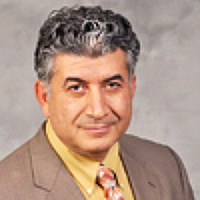Neutrophils, NETs, NETosis and their paradoxical roles in COVID-19
Published on: 11th May, 2020
OCLC Number/Unique Identifier: 8592950514
The pandemic of COVID-19 has adversely affected the world in many aspects. The health and economic sectors suffer most of the repercussions of this disease. The search for a cure for this rapidly spreading virus which is causing massive life losses worldwide requires clear understanding of the immunopathogenesis of this virus so as to develop pinpointed targeted therapies rather than relying mainly on supportive care measures and drug repurposing to fight this life-threatening virus infection.
Neutrophils, neutrophil extracellular traps (NETs), and NETosis are not well studied not only in COVID-19, but also in coroviruses in general. The review will shed lights on the functions of neutrophils, NETs, and NETosis in various infectious complications as well as in sepsis and acute lung conditions in an attempt to understand their actual roles and in order to help in designing targeted therapies in the near future.
Evaluation of the effects of Leech Salivary Extract (LSE) on Haematological parameters in Rats
Published on: 19th January, 2018
OCLC Number/Unique Identifier: 7355940230
The effects of Leech Salivary Extract (LSE) on some haematological, immunological and organ weight parameters in rats, during a twenty eight days oral administration of 25, 50 and 100 mg/kg body weight doses, was investigated. LD50 and sub chronic toxicity was determined using standard methods. The oral LD50 was above 5000mg/kgbw. Oral administration of LSE (25mg/kgbw, 50mg/kgbw, 100mg/kgbw) for 28days had no significant (p>0.05) effect on the differential white blood cells (lymphocytes, monocytes, basophils, neutrophils, eosinophils), red blood cell indices (RBC count, PCV, HB, platelets, MCHC and MCH), feed intake, body weight gain and relative organ weight of lung, heart, liver, kidney, spleen and stomach of rats. However, the LSE evoked a significant (p>0.05) increase in the level of MCV in treated rats compared to the control. These results, indicating low toxicity and no negative significant effects of LSE on haemato-immunological indices in rats, suggest that the extract is safe for development and use as therapeutic for managing clinical conditions.
Fatal agranulocytosis associated with Metamizole treatment in a 16-year-old girl
Published on: 2nd October, 2019
OCLC Number/Unique Identifier: 8286573110
Agranulocytosis is one of the common reasons of consultation in hematology. It’s life-threatening because of an infection risk. The metamizole is a drug, known for its potential rare danger of inducing a severe agranulocytosis. However, it remains widely used because of its beneficial effect analgesic and antipyretic. We report in this study, a case of a girl who was 16 years old, referred for severe agranulocytosis, and appeared two weeks after treatment with Novalgin. The clinico-biological symptoms were dominated by Streptococcal septicemia with an infectious pulmonary and digestive focus. The blood cell count confirmed a severe agranulocytosis with total disappearance of neutrophils. Despite broad-spectrum antibiotic therapy and stimulation with hematopoietic growth factor, the clinical evolution was fatal in the short term. What motivates us to add this case to those of the literature in order to remind practitioners about the danger of this drug, and to promote has doubled of vigilance during use.
Cytomegalovirus infection in native kidney biopsy
Published on: 17th December, 2019
OCLC Number/Unique Identifier: 9272394400
A 61-year-old Brazilian black woman consulted with a nephrologist due to proteinuria identified on a routine urine test. She has a personal history of thymoma resection five years ago, followed by multiple episodes of pulmonary infections including mycobacteriosis, recurrent mucocutaneous candidiasis, and paraneoplastic pemphigus. Physical examination showed no edema or hypertension and laboratory tests identified proteinuria of 2.43 g/day without hematuria, serum creatinine of 0.69 mg/dl, urea 34 mg/dl, serum albumin of 2.4 g/dl, hemoglobin 10.9 g/dl, platelets 292,000/mm3, leukocytes 4950/mm3, lymphocytes 594/mm3 and neutrophils 3910/mm3. The hemolysis tests were negative and serum iron was low. Analysis of glicemia and serum lipids levels were normal as well as serum complement and imunoglobulins, except for an IgM level of 283 mg/dl (normal values 40 to 230 mg/dl) and undetectable IgE. Serologies for Syphilis, HIV, hepatitis B, C and antibodies for autoimmune diseases were negative.
The complement cascade as a target against SARS-CoV-2-induced pneumonia
Published on: 14th February, 2023
Fox, et al. [1] reported on the relevant cardiopulmonary findings in a series of autopsies of patients deceased from SARS-CoV-2 infection. In particular, regarding the histologic examination of the lungs, they observed bilateral diffuse alveolar damage with a lymphocytic infiltrate, thickened alveolar capillaries, fibrin thrombi within the capillaries and small vessels, and entrapment of neutrophils, without any significant neutrophilic, infiltrate within airways or the interstitium.
Tussilago farfara Extracts Decrease Lung Injury in Fine Dust-Induced Mice by Inhibiting of Inflammatory Cytokine Levels, Neutrophil Accumulation, and Endothelial Dysfunction
Published on: 30th May, 2024
Fine Dust (FD) in the respiratory air generates a variety of human disease issues throughout the earth. This study aimed to investigate whether (1) Tussilago farfara extracts (TF) decrease neutrophils accumulation, typical pathological features, and goblet cell hyperplasia in mice following exposure to fine dust (FD); (2) inflammatory cytokines result from FD exposure; and (3) asymmetric dimethyl-arginine (ADMA) and symmetric dimethyl-arginine (SDMA) levels in the mice following exposure to FD. Seven-week-old male Balb/c mice (n = 5/group) were instilled two times by intra-nasal-trachea (INT) injection for 3 days and 6 days to the mice four groups; normal, control, FD + dexamethasone (Dexa, positive control), and FD + TF groups. TF suspended in 0.5% carboxymethyl cellulose (CMC) was administered orally to the mice daily for 10 days (100 mg/kg). Neutrophil accumulation, typical pathological features, goblet cell hyperplasia, ADMA, and SDMA levels were assessed on day 10 in FD-induced mice. Results indicated FD significantly reduced neutrophil accumulation in BALF, typical pathological features containing goblet cell hyperplasia in lung tissues, and inflammatory cytokines [interleukin (IL)-17 and tumor necrosis factor-α (TNF-α), macrophage inflammatory protein-2 (MIP-2) and C-X-C motif chemokine 1 (CXCL-1)]. Furthermore, TF significantly decreased levels of elevated ADMA and SDMA by FD exposure. Collectively, TF decreased the counts of neutrophils in BALF, histological changes in lung tissues due to downstream secretion of inflammatory cytokines, and levels of ADMA and SDMA. Therefore, TF may be a potential therapeutics for treating FD-associated diseases.
Seminal Extracellular Traps in SARS-CoV-2 Infection
Published on: 19th August, 2024
Introduction: Extracellular Traps (ETs) are fibers composed of chromatin and cytoplasmic proteins, which can trap and kill pathogens by the phenomenon called ETosis. They are released by neutrophils, macrophages, and monocytes, and can be found in semen. The aim of this presentation is to evidence of the indirect effect of SARS-CoV-2 in semen by ETs.Patients and methods: Experimental design: retrospective descriptive observational study.Semen samples from two groups were studied following WHO guidelines: 1) SARS-CoV-2 infected donors (n: 5; at 7, 15, 30, 60, and 90 days after PCR diagnosis); 2) COVID-19 positive patients assisted in our laboratory between 2021 and 2022 (n: 70). They were observed in fresh and in Papanicolaou-stained smears by CASA and light microscopy; the presence of macrophages, spermiophages, ETs and hyperviscosity were recorded while neutrophilic concentration was calculated. Two control groups were designed: a) Patients belonging to group 2, studied before de pandemia (n: 13); b) Culture-negative semen samples (n: 28).Results: In the first group, ETs were observed in all the samples, while only 18% had leucospermia. Macrophages, spermiophages, and hyperviscosity were recorded in 68%, 27%, and 36% of the studied cases respectively.In the second group, ETs were present 100% in the acute phase (< 90 days after diagnosis) and decreased to 71% in the later stage (90 to 270 days). The trapped sperm were non-progressive motile or immotile alive or dead.No traps were found in either control group.Conclusion: In our study ETs were the most sensitive seminal marker of SARS-CoV-2 infection.
















